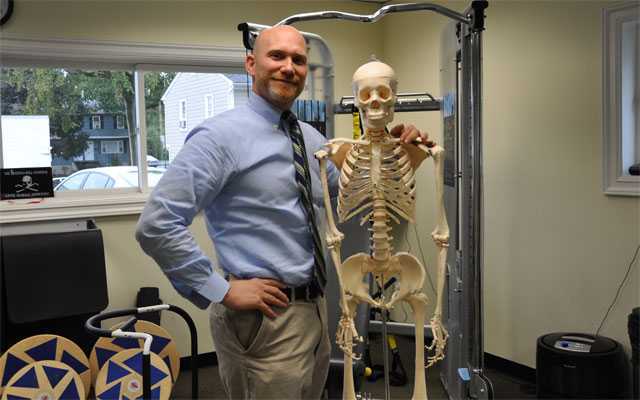In 2011, the FDA issued a warning to patients and medical professionals that transvaginal mesh implant surgery for pelvic organ prolapse (POP) often created more problems than it solved. The warning also noted that “there was no clear evidence transvaginal POP mesh repair was more effective than non-mesh repair” for treating POP. Furthermore, the FDA report emphasized that the mesh itself, rather than surgical error, lead to pelvic pain in many patients.
However, transvaginal mesh implant surgery remains a commonly recommended treatment for POP. A Justice News Flash post, titled “Don’t Wait In Vain For Pelvic Pain To Resolve After Removal of Mesh Implants”, recently discussed how this surgery often leads to the development of Pudendal Neuralgia in patients, “more often than not [requiring] complete removal of the mesh.” In short, in lieu of sending these patients to trained physical therapists, and, in spite of FDA warnings, many medical professionals continue to recommend transvaginal mesh implant to treat POP.
Pudendal Neuralgia, already an underdiagnosed, undertreated, and underserviced illness, is noted for how few therapists and other medical professionals have the proper training to treat it. Peripheral nerve regeneration can take up to six months for patients who developed Pudendal Neuralgia after surgery.
Ultimately, it is the patient who is left to suffer for extended periods of time and go through unnecessary procedures. Patients with either POP or Pudendal Neuralgia would be much better served by a trained pelvic rehabilitation professional than a doctor who is unaware of, or ignores, alternatives to a surgery that FDA warnings against.
For pelvic rehab professionals, this means that asking about previous surgery, particularly transvaginal mesh surgery, is vital to treating patients who suffer from pelvic pain.
This August, Herman & Wallace is proud to offer a course on Treating and Assessing Pudendal Neuralgia in Altanta, GA. We hope to see you there!
While on a walk with my son recently, as he was collecting sticks, he casually repeated the phrase "sticks and stones may break my bones, but words can never hurt me..." and it allowed us to have a brief discussion about how words can, and do, hurt people. Parents today are armed with terrific tools to learn about emotional intelligence, and how the power of language can, for example, help preserve a child's self-esteem while the parent still sets up boundaries. How often are we trained as adults to pay attention to the phrases, gestures, or words that we use during adult interactions, or in patient care interactions? Think about a mentor, supervisor, or friend who you admire- who you aim to emulate. What is it about the person's interactions you find inspiring? Is it the command of the situation she has, the compassion she exudes, or the intelligent way she can say things to a patient? Regardless of the trait you are admiring, communication is likely a key factor in the interactions you find pleasing.
A recent MedScape article asks doctors to share words they let fly, only to wish they could take them back. We have all spoken in haste, in frustration, or in jest, only to realize that we have offended a patient, a family member, or a colleague. The most important thing in that situation may be the actions that follow the indiscretion. And as many martial arts traditions teach, the highest form of self-defense is to avoid conflict in the first place, so how can we best position ourselves to avoid using phrases, gestures, or other communications that offend and create barriers between ourselves and the patient? The most critical part of the solution is awareness. We all use phrases that are so commonly part of our everyday life we don't even know we are using them. It could be "cool" or "is that right?" Do you really mean that a patient's response to your intervention is "cool?" And do you really want the person to clarify if what they are saying is true? What if we took the world as literally as some of the children in our lives do? What would our day look like? Looking at some typical, and lazy ways that we talk, is is accurate to say the following?
- I'm starving
- I wanted to die
- He is so worthless
- You'll be fine
- Let me be honest with you
- Here's what you need to do
- I hope this doesn't offend you
Total Physical Therapy recently posted two excellent videos on the pelvic “dump”: the Pelvic “Dump” and Muscle Length and the Cure for the Pelvic “Dump”. The first video describes how the hamstrings, abductors, and the gluteal (“glutes”) muscles affect pelvic “dump”, also known as the pelvic tilt. The second examines stretching techniques that can ease the tightness and, thus, treat pelvic tilt.
Pelvic tilting occurs when the pelvis is not orientated correctly, and is becoming more and more common as sedentary lifestyles bceome the norm in America. Daily activities, such as sitting at a computer for example, can often lead to a pelvic tilt. Resting against the back of one’s chair or leaning forward to read small print can feel more supportive than utilizing the correct muscles required maintain proper posture. To put it another way, when doing activities many Americans do daily, it is often easier to rest one’s body on another surface for extended period of time than it is to exercise proper biomechanics.
However, this behavior often leaves patients with pain and stiffness in the back, knees, and hips. Furthermore, if left untreated, these symptoms have a tendency to become more severe over-time.
This August, Herman & Wallace will be presenting a course on the Biomechanics of the Hip & Pelvis. In the course, instructor Steve Dishavi will show a number of videos on proper posture and body mechanics, and instruct on how to analyze a patient’s movement and make corrective recommendations.
Seats are limited. Register today!
For more than sixty years, Kegel exercises have been a common, albeit rudimentary, form of treatment to strengthen the pelvic floor. These exercises have become so omnipresent that the pelvic floor is commonly known colloquially as the “Kegel muscle.” Perhaps best known by the public for their ties to increased sexual function, Kegel exercises are often inappropriately considered the hallmark of pelvic floor wellness.
In a recent Chronogram article, titled “Could Your Pelvic Floor Use a Renovation?” Wendy Kagan describes the significance of Kegel exercises: “Today they’re a first-line defense against genital prolapse and urinary stress incontinence (i.e., leakage that occurs with jarring movements like coughing, jumping, or lifting). Dreaded by some, championed by others, Kegels are the pelvic equivalent of flossing—something most women know they should do, yet often guiltily do not do.”
The biggest problem with this article is that Kegels are not the “first line of defense”. Nor are they, necessarily, the best practice for everyone’s daily regimen. Prescribing pelvic floor strengthening without properly assessing the pelvic floor can be harmful for patients.
Kegels have become more popular in the public sphere. Popular exercise programs such as Yoga and Pilates often include Kegel exercises as part of their routines. Some have over-expressed the sexual benefits of Kegels. One hardly can open a Cosmo without finding an article on Kegel exercises for enhanced performance and pleasure during sexual activity. Furthermore, for men, Kegels have been prescribed as solutions for everything from erectile dysfunction to premature ejaculation. As popularity and awareness has grown, many have taken to performing Kegel exercises without speaking to a professional, which is never a good plan for benefiting one’s health.
However, the popularity of Kegels brings with it a public recognition that pelvic floor health is imperative and deserves to be cared for actively. Though not quite the silver bullet that Kagan’s article suggests, when properly recommended by a PT, Kegels, can be an important tool in treating patients. . As we examined in a past Pelvic Rehab Report: “Pelvic Floor Muslces: To Strengthen or Not to Strengthen?”, doing Kegels correctly is more than just tightening the muscles: “If a patient presents with pelvic muscle tension, shortening of the muscle, and poor ability to generate a contraction, a relaxation phase, or a bearing down of the pelvic muscles, how in the world will trying to tighten those overactive muscles bring progress?”
Herman & Wallace recently began developing a product to help therapists educate and treat patients on how to properly execute Kegel exercises. Check out “All About Kegels” to learn breathing techniques and exercises to help patients effectively build pelvic floor strength.
While many prenatal women practice yoga to stay healthy and fit during pregnancy, prenatal yoga is becoming a more and more popular tool to prepare women for labor. The topic of prenatal pregnancy was recently covered in the Welland Tribune. The article, titled “Prenatal Yoga Gets Women Ready for Birth,” follows Angela Sacco, a registered nurse and pre- and post-natal fitness specialist. Sacco has attended more than 100 births. Her eight-week program is specially-tailored to aid pregnant women as they prepare for giving birth.
According to Sacco, “Yoga in the delivery room, be it home or hospital, is meant to relieve pain, build confidence and make it all go quicker.”
Although the fitness benefits – enhanced strength, stamina, and flexibility – are significant, Sacco’s program’s greatest asset may be that it allows participants to understand the natural processes of child-birth. Furthermore, with this understanding comes vital confidence, intangible equally central to a successful labor.

This September, H&W will be offering a course on Yoga for the Pregnant Patient. This course is designed to teach therapists on how to safely recommend yoga prescriptions through each stage of pregnancy.
This November, Herman & Wallace is proud to bring our Differential Diagnostics of Chronic Pelvic Pain and Dysfunction to Orlando, FL! This three-day course is taught by Peter Philip, PT, ScD, COMT.

Pelvic Rehab Report sat down with Peter recently to talk to him about his course.
What can you tell us about this continuing education course that is not mentioned in the “course description” and “objectives” that are posted online?
There are many cause of pelvic pain! For instance, the pudendal nerve is often implicated as the sole source of pelvic pain, and this is simply not true. This course covers multiple reasons and nerves that can cause pelvic pain and dysfunction, and instructs participants on how to determine the exact tissue at fault when approaching patients with pelvic pain and dysfunction.
The course also covers the multiple factors and etiologies leading to the formation of muscle spasms, so that muscle spasms can be treated and, ultimately, eliminated.
At the course, the clinician will learn to determine the origin along the neuroaxis where his/her patient’s pain initiates, and - more importantly - how to specifically address and remedy the patient’s ailments.
The lecture portion of the course is based on applied anatomy and differential tissue tension. Lab sessions cover palpation strategies. After the course, there will be no more ‘guessing’ which and what structure is being palpated; the clinician will know.
The clinician will learn how to palpate, test and treat the anterior sacroiliac joint ligament, and learn its role in not only pelvic pain, but lower back pain as well.
The course also covers how to specifically test each sacral nerve, and to determine its contribution to the patient’s pain and dysfunction.
Using these techniques, I expect to have a positive impact on my patient population within three visits. The goal of my course is to teach other clinicians to do this for their patients too.
What inspired you to create this course?
My first patient with pelvic pain took his own life as a result of his persistent pain, and the secondary losses of career and relationships. This had a huge impact on me, and was coupled with a frustration that I felt because there wasn’t a means of accurately determining the exact tissue at fault in the initiation and perpetuation of a patient’s pain and dysfunction.
What resources and research were used when writing this course?
Over fifteen years of research and clinical experience went in to the development and formation of the content and information presented in this course. I drew from the orthopedic, neurophysiologic, urogynecologic and pathophysiologic practices and research and integrating these practices into a unified, progressive evaluation and treatment strategy.
Can you describe the clinical/treatment approach/techniques covered in this continuing education course?
The general concept is that every pain has a source. It is up to the clinician to determine what that cause is, and to formulate a treatment strategy that reflects and accurately addresses the tissue(s) at fault. In doing so, both the clinician and the patient will notice immediate resolution of pain, spasm and dysfunction.
Why should a therapist take this course? How can these skill sets benefit his/ her practice?
This course provides all clinicians with the opportunity to understand the entirety and complexity of the patient with pelvic pain, and dysfunction. The clinician will understand the role and interaction of the brain, spinal cord, spinal joints, sacroiliac joint, hip joints, ligaments of the spine and sacroiliac joint, and individual nerve roots have in the initiation and perpetuation of their pain and dysfunction.
This course is a must for clinicians who are eager to learn more about chronic pelvic pain and dysfunction. Seats are limited so register today!
For the last few months, Herman & Wallace's team of Item Writers have been plugging away at writing the questions and answers that will appear on the multiple-choice certification exam for Pelvic Therapy Practitioner Certification (PTPC). We needed 450 items in the item bank in order to move onto the next step of exam development, and are so excited to announce that, today, we hit 400 items! That means, we have only 50 items to go!
In August, our team of Subject Matter Experts will meet to go through the 450 items to edit them for clarity, accuracy and convention. This is one of the final steps (prior to beta-testing the items after review) before we launch the exam!
Once the first offering of the exam is announced, H&W will be making study guides and other materials available.
The PTPC exam will be multiple-choice and contain 150 questions. Questions will relate to pelvic floor dysfunction in men and women throughout the life cycle. The 150 questions will relate to 8 domains, based on the Test Blueprint created from the Job Task Analysis. The chart below lists the domains, the general percentage of content in the exam for that domain, and the approximate number of test questions pertaining to the given domain.
| Anatomy (15%) | 22 or 23 | |
| Physiology (20%) | 30 | |
| Pathophysiology (20%) | 30 | |
| Pharmacology (5%) | 7 or 8 | |
| Medical Intervention & Tests (5%) | 7 or 8 | |
| Tests & Measures (10%) | 15 | |
| Interventions (20%) | 30 | |
| Professional & Legal (5%) | 7 or 8 |
Those who want to start preparing can review their anatomy and physiology of the pevic floor. Herman & Wallace Pelvic Floor series courses will be the most relevant to the exam, but all courses offered by the Institute cover important aspects of pelvic rehab. Online courses are also an excellent way to review concepts, particulary Functional Applications of Pelvic Rehab Part A and Part B.
Be sure to review information related to pelvic floor in men and women of all ages, as this exam fills the void left by other specializations that focus solely on women's pelvic floor dysfunction, ilke the WCS exam offered by the APTA.
We are so excited to soon be finished with Item Writing and to move on to item reviewing next month. We are even more excited to be able to offer therapists the ability to distinquish themselves with PTPC to show their expertise in treating pelvic floor dysfunciton!
Fecal transplants have been in the medical news lately as the Food and Drug Administration attempts to standardize the procedure. The procedure is also known as a fecal microbiota transplantation, or FMT. If this is a new topic to you, here's how it works: a patient who has bowel dysfunction transfers stool from another personinto their own body. The burning question most people have when they first hear about this is: "How?" The transplantation can be completed, according to this Mayo clinic article, through a nasogastric tube, nasojejunal tube, upper tract endoscopy, colonoscopy, or a retention enema. Before you think you would never choose this procedure, consider the evidence and the dire consequences of severe bowel dysfunction. The evidence for cure or recovery from bowel dysfunction requiring hospitalization is as high as 90%. The potential consequences of severe infection or conditions such as colitis can include disability, colon removal, progression to cancer, or even death.
The most common indication in the literature at this time for a fecal transplant is chronic c-difficile infection, described in this MedScape article. People have even figured ways to DIY (do-it-yourself) when it comes to stool sharing. There is a website called the "Power of Poo" that is dedicated to increasing public awareness of the procedure. Clearly this is a topic that, if you have not yet heard about it from your patients or friends, you soon will. If you would like to learn more about the procedure, check out the links provided within this report, or click here for a great Q & A with Dr. Brandt about fecal transplants.
Herman & Wallace has also put together a comprehensive Prolapse/Colorectal Care resource for therapists treating fecal incontinence patients, complete with evaluation forms, patient questionnaires, and education materials.
Although exercise is critical for pregnant women (just as it is for everyone), few receive the appropriate amount of exercise. This may seem intuitive, but physical symptoms of pregnancy often are a barrier to physical activity for women.
A recent Research Report article published in The Journal of Women's Health - Physical Therapy, titled “The Impact of Symptom Type and Frequency on Activity Level During Pregnancy,” studying the daily records of physical activity for “sedentary women with a history of preeclampsia,” discusses how maternal weight and gestational age affect activity levels. For example, women who are already over-weight have lower activity levels during pregnancy. Similarly, the further along the baby is, the less likely the mother is to be physically active. Women, after week 28, have the greatest reduction in physical activity.
This is problematic because a healthy mom is crucial for both the health of the mother and the health of the baby. Furthermore, symptoms like fatigue and backache decrease among more active moms. Gestational diabetes and cardiovascular disease are less likely among active moms as well. Over-exercise can be detrimental as well; however, the numbers of women over-exercising during pregnancy is negligible compared to the majority, who are under-active during pregnancy. Often, these physiological problems persist after pregnancy.
Therefore, the challenge for therapists is to find a way to educate their pregnant patients about the importance of physical activity during pregnancy as well as give them advice on how to implement an active lifestyle within their daily routine. H&W recently expanded our courses on pregnant, peripartum, and postpartum patient care to help therapists when they treat these patients. Check out the following events on the horizon in the coming months:
Care of the Pregnant Patient
Winter Park, FL. Sept. 21-22, 2013
Despite the fact that millions of men and women experience pelvic floor dysfunction, it is often and incorrectly considered a “women’s health issue” and pelvic rehabilitation is often thought to be the province of Women’s Health physical therapists. Information about pelvic rehabilitation is often couched in language that revolves around perinatal and elderly female patients, while ignoring men, athletes, and teens.
For example, both male and female athletes can be frequent sufferers of pelvic floor dysfunction, as a by-product of the extreme stress high level performance takes on their bodies, often linked to sports hernia and femoroacetabular impingement.
This year, Herman & Wallace is introducing a new course which applies a sports medicine approach to treating the pelvic floor and core. Biomechanics of the Hip and Pelvis illustrates how understanding pelvic balance and manual movement therapy are integral to treating and preventing injury. This course is instructed by Steve Dischiavi, MPT, DPT, ATC, COMT, CSCS, who is the PT for the Florida Panthers hockey team and is applicable to treating all patients: from men to new moms, athletes to the elderly.
H&W faculty instructor, Stacey Futterman, PT, MPT, WCS, BCB-PMD, had this to say about Steve:
“I have known Steve for years and have tremendous respected for his orthopedic and sports medicine skills. After I took Steve’s course on how to implement the integrated sling systems, I developed therapeutic exercise programs for my clients that were more core and hip focused. I was amazed when I leaned how I could use the same theories Steve applies with his professional athletes to my pelvic and women’s health clients of all ages. It’s also a great course to understand body mechanics as it pertains to the hip and pelvis when applying it to exercise. Clinicians of all disciplines from sports medicine to women's health will enjoy Steve's a dynamic speaking style and wide knowledge base.”
Fellow H&W faculty instructor Pamela A. Downey, PT, DPT, WCS, BCB-PMD, said:
“Steve is an accomplished PT, works with high level athletes (the hockey team here the Panthers) and teaches in the t-DPT at NSU, where I have met him. He really understands the hip and trunk stabilization and is a manual therapist. He was a very effective speaker, with good labs, excellent slides and media pieces, and genuinely likes to teach.”
H&W is thrilled to be launching this brand new course in 2013. Don’t miss your chance to expand your skill set and approach – register today!
By accepting you will be accessing a service provided by a third-party external to https://hermanwallace.com/











































